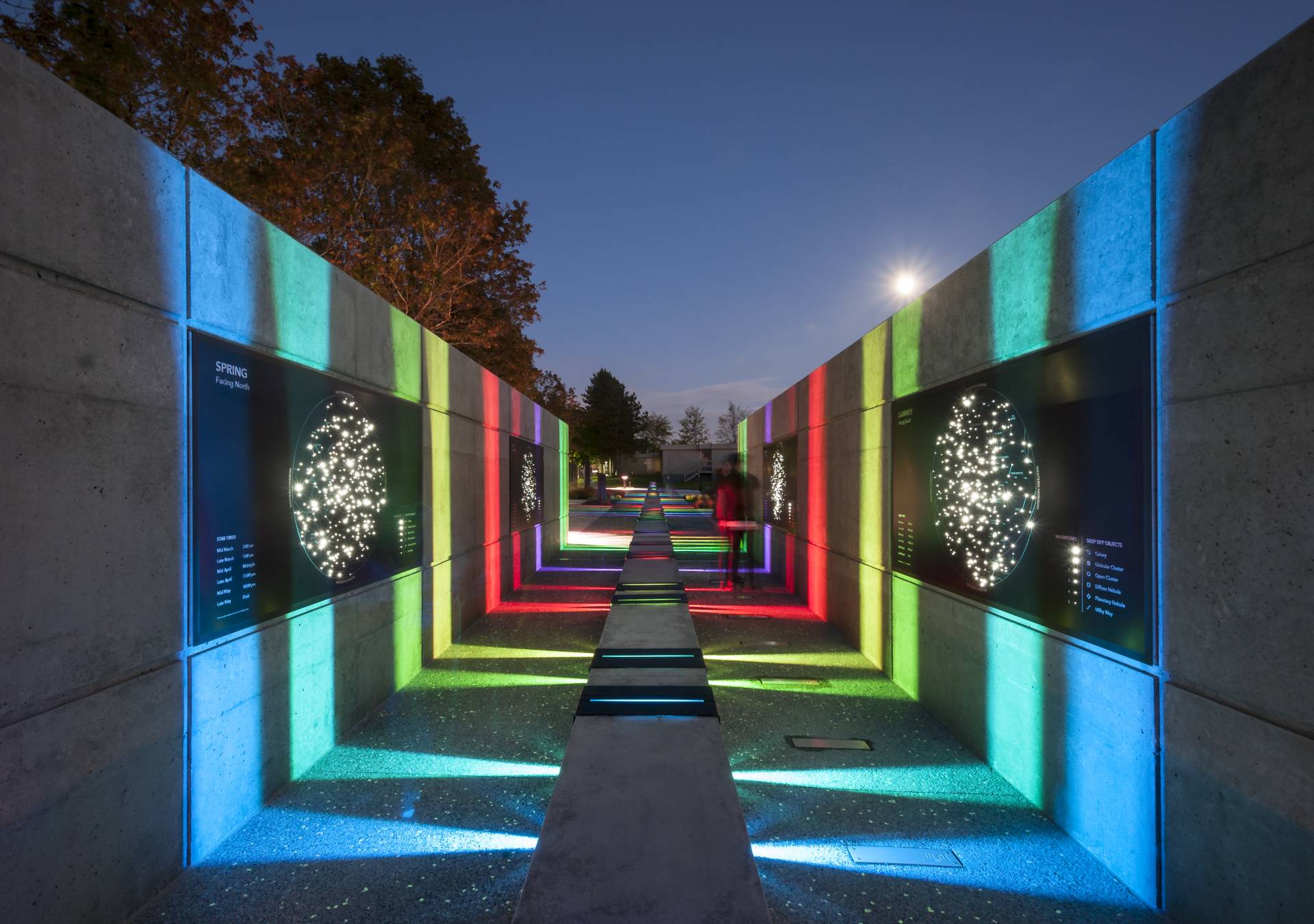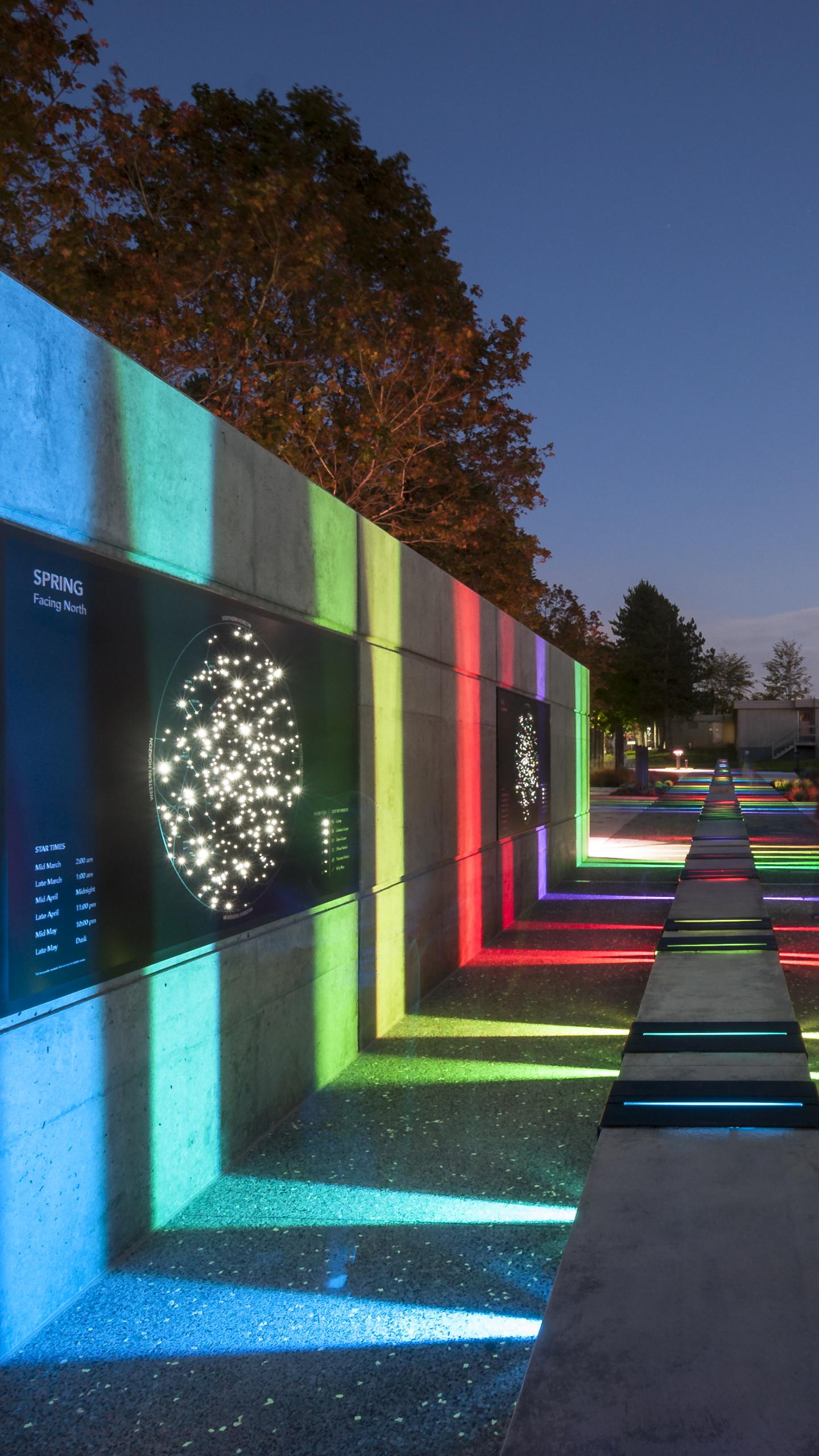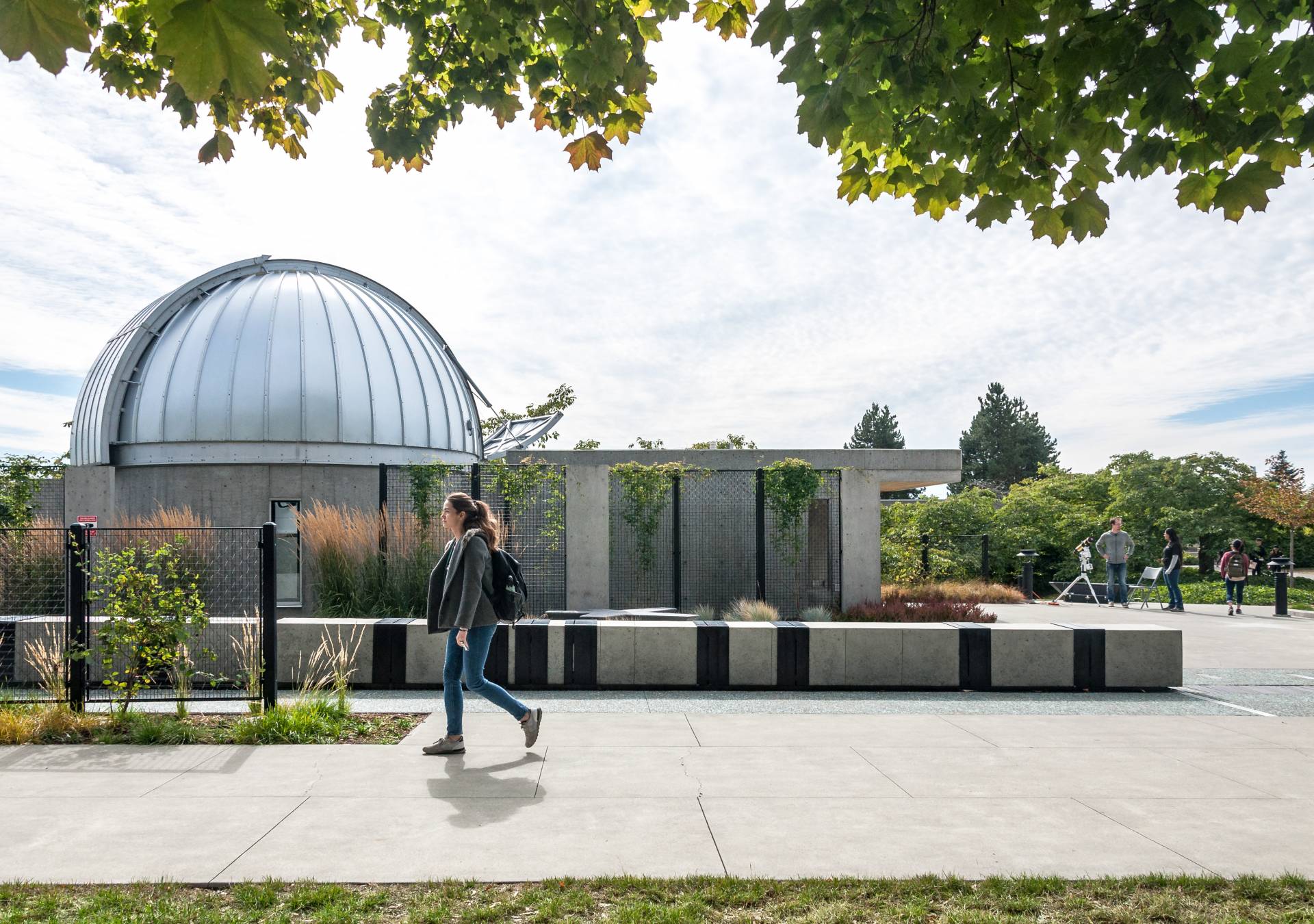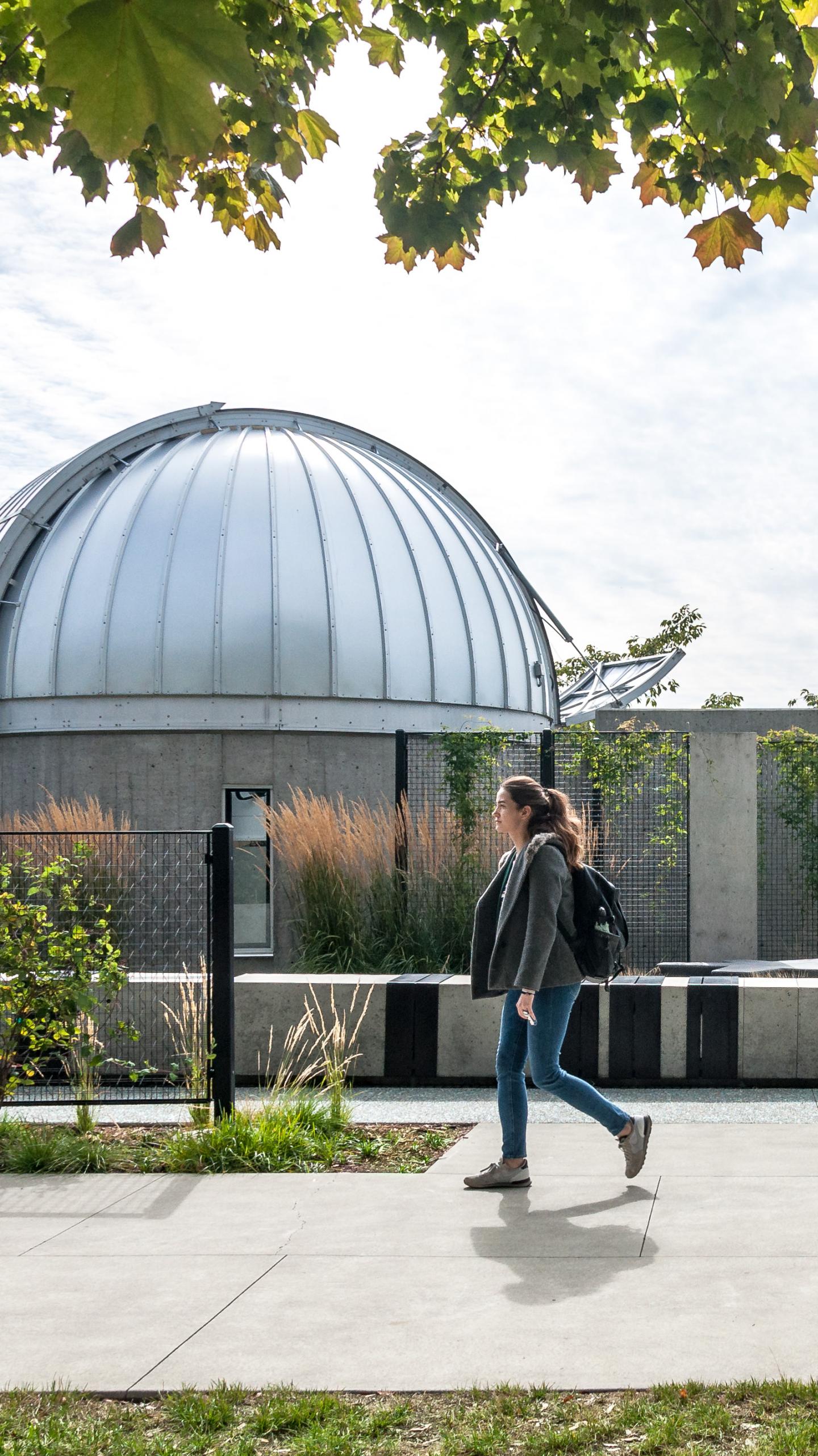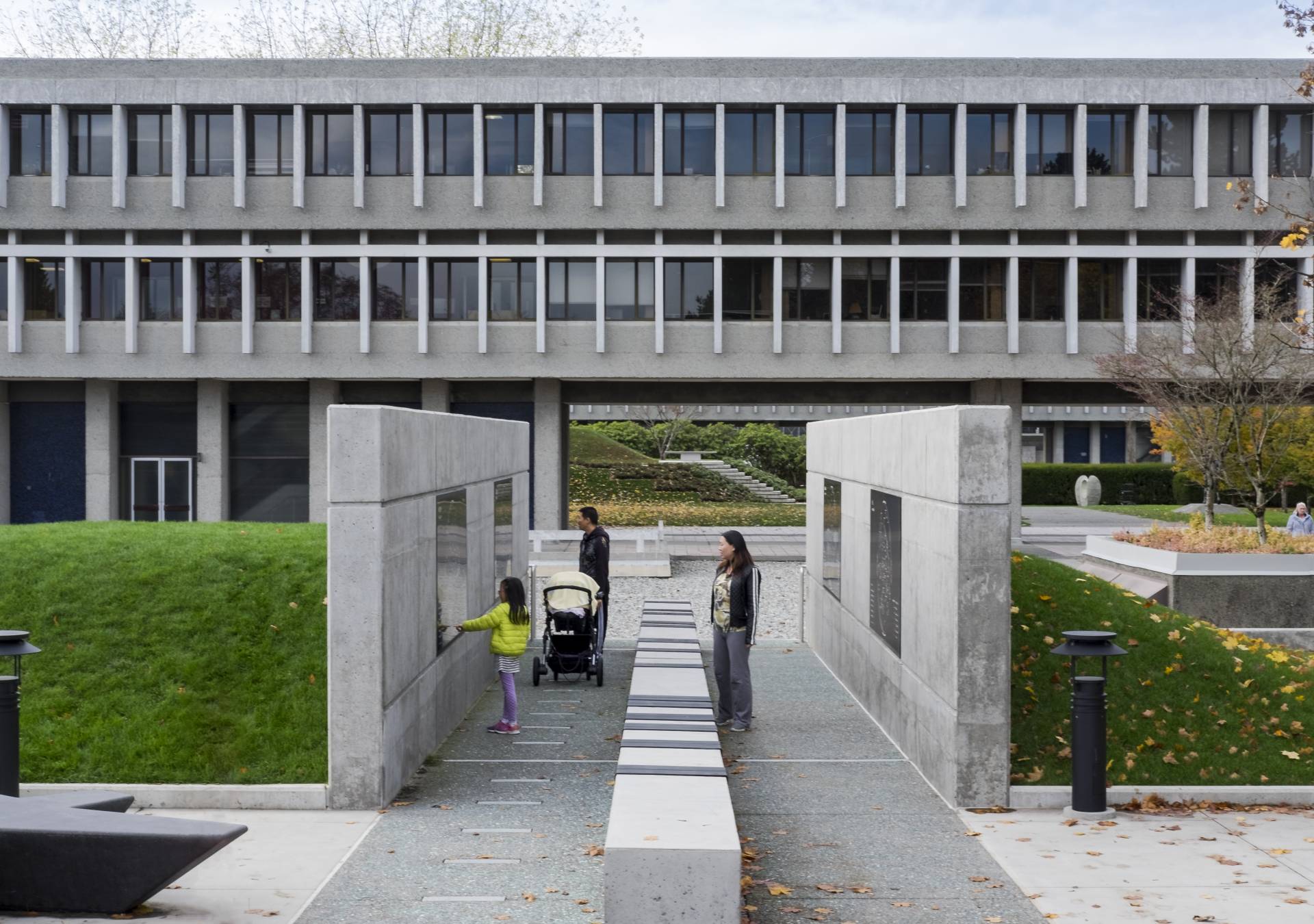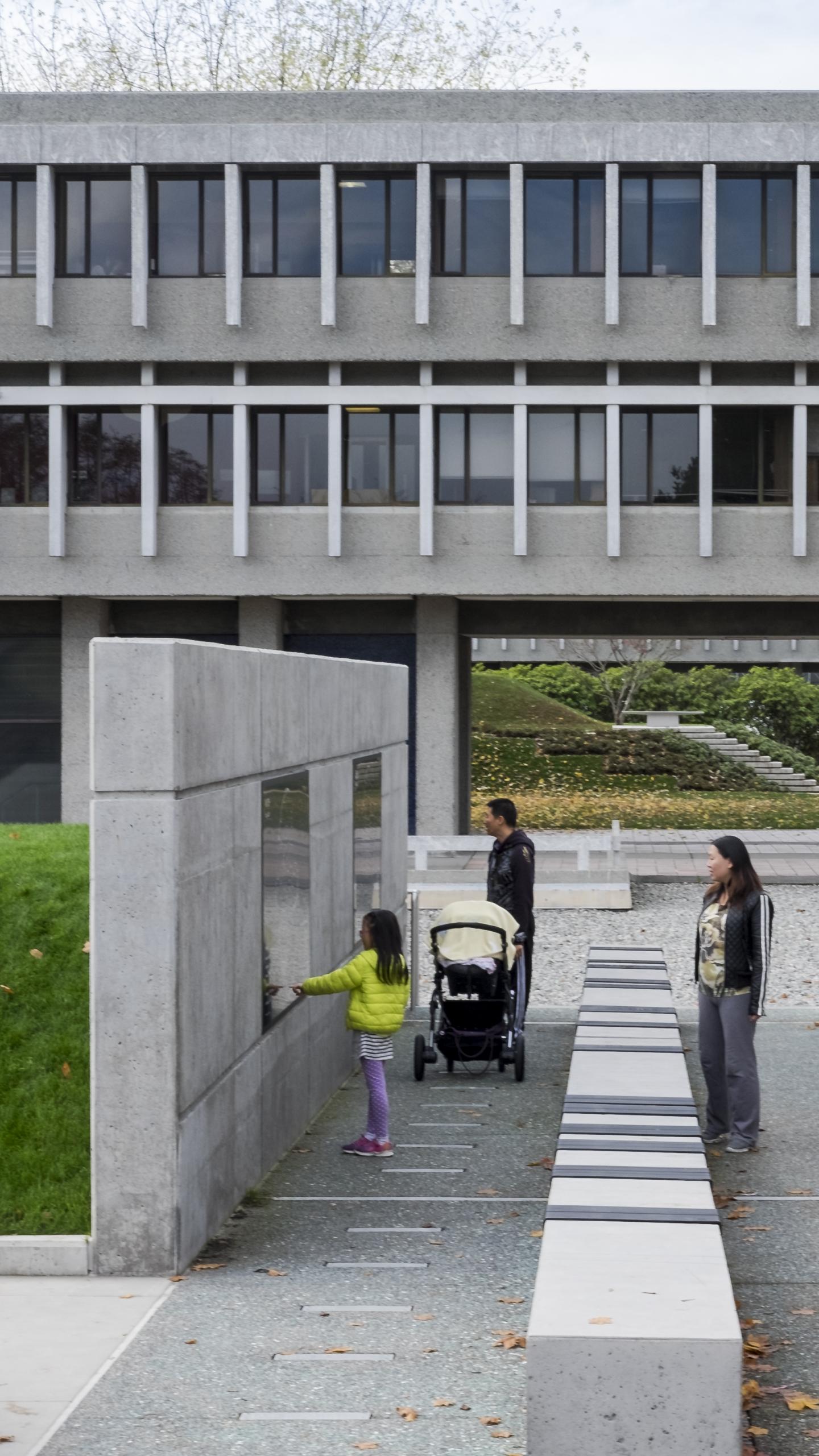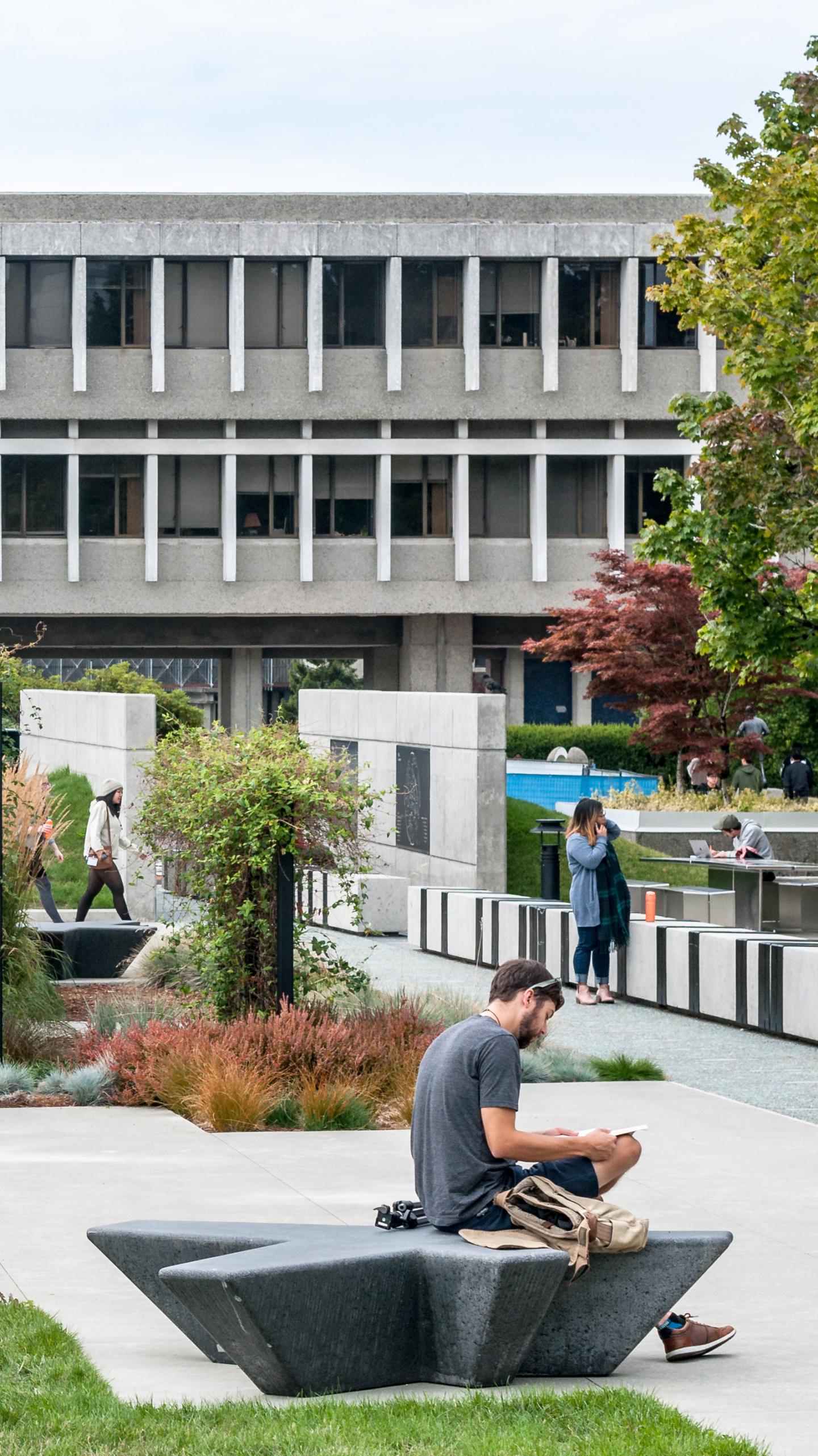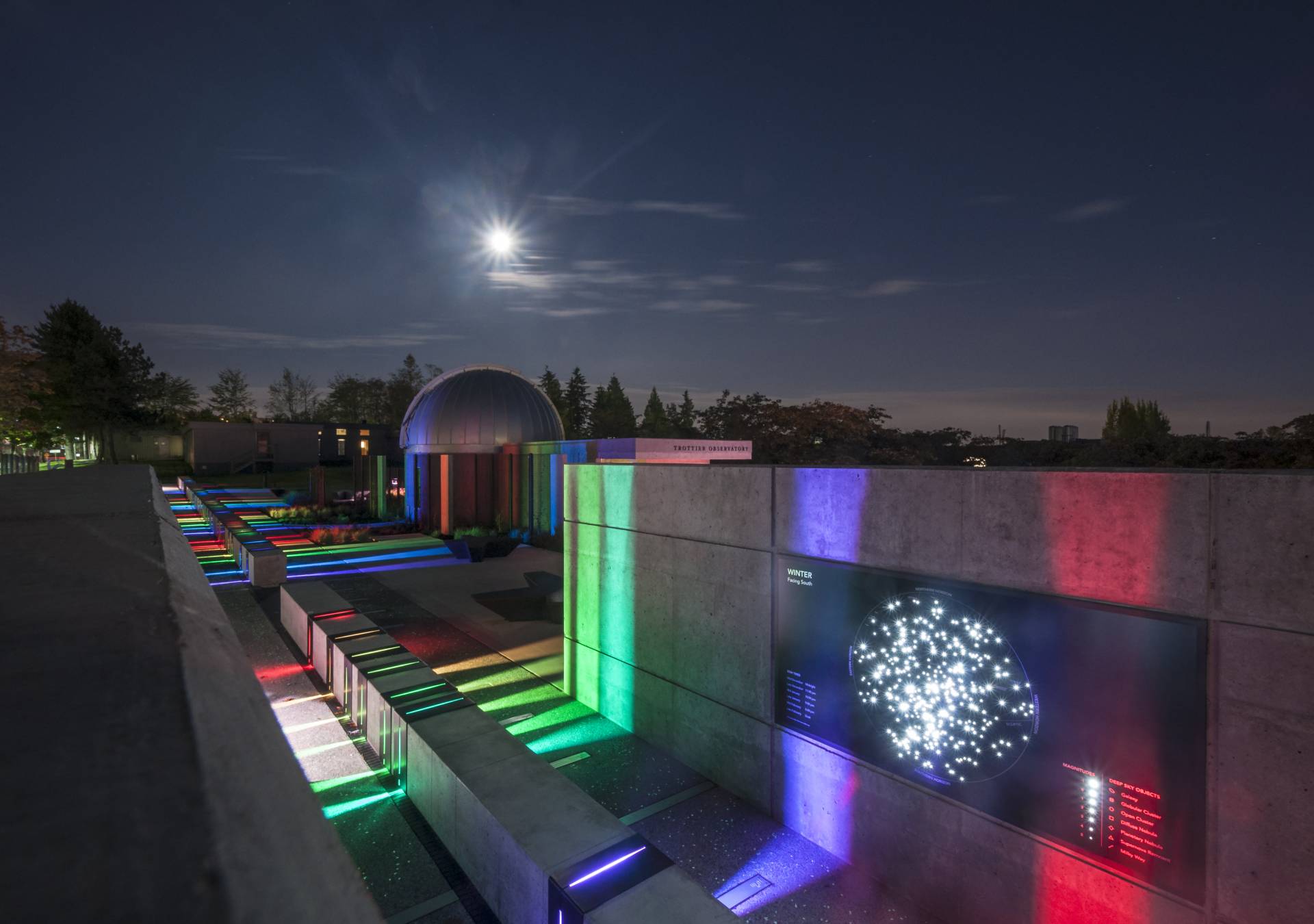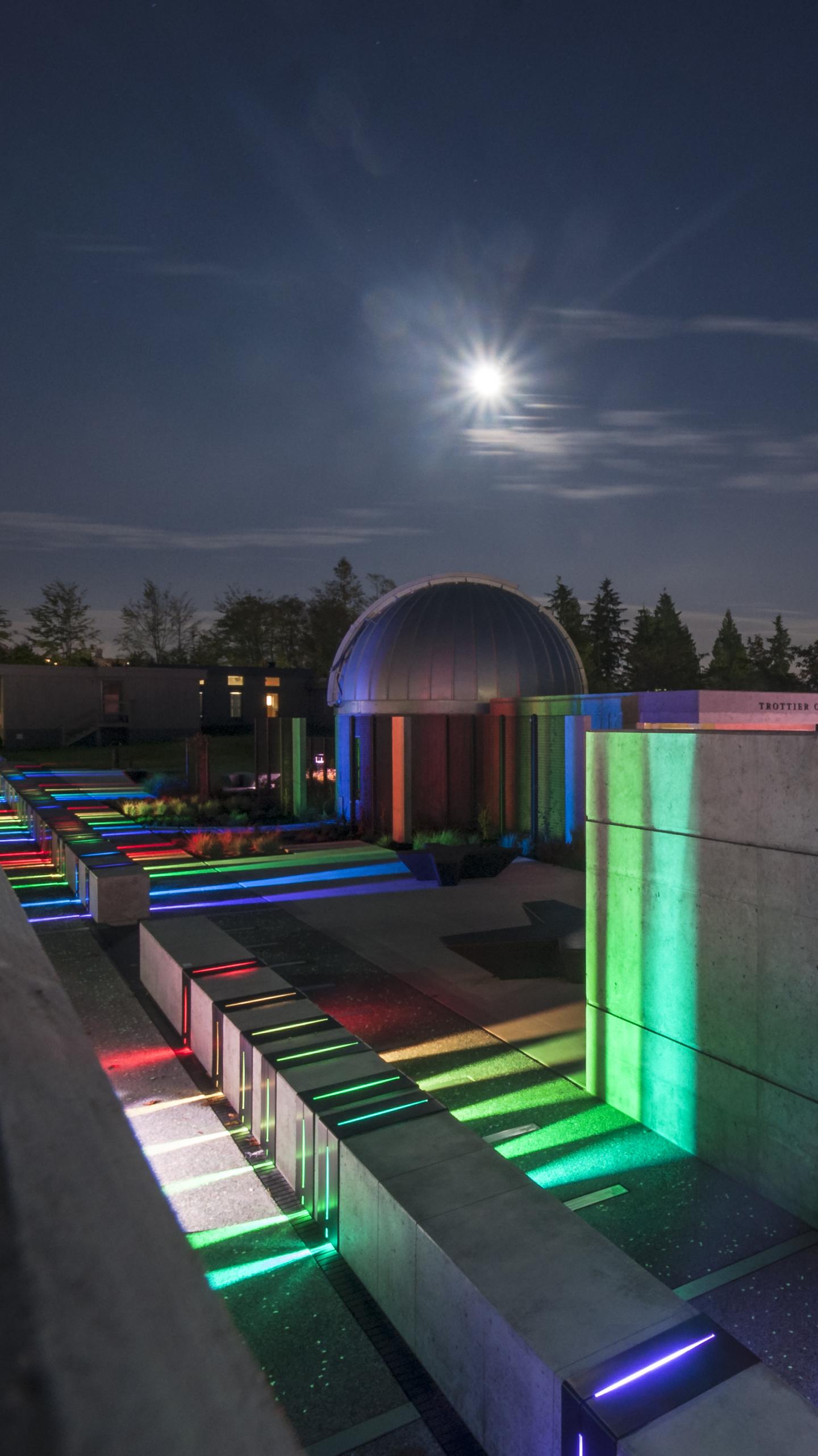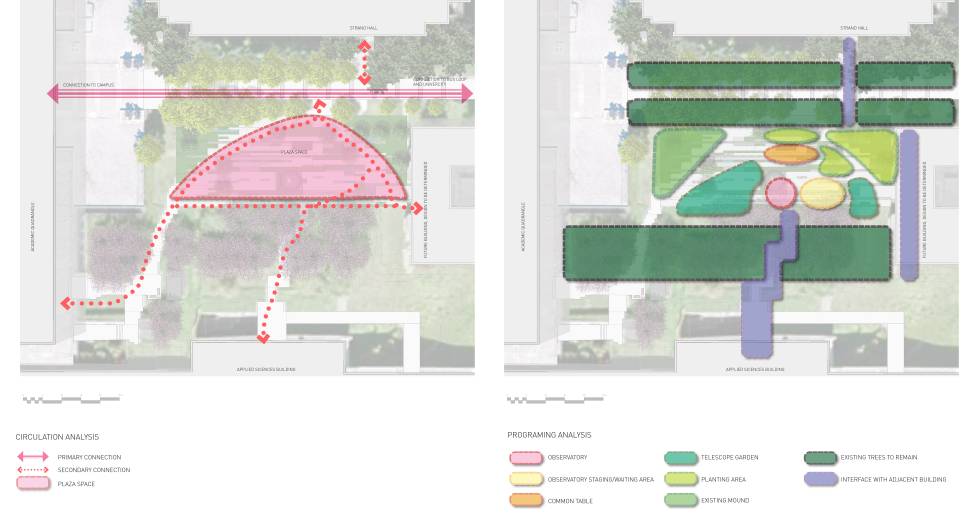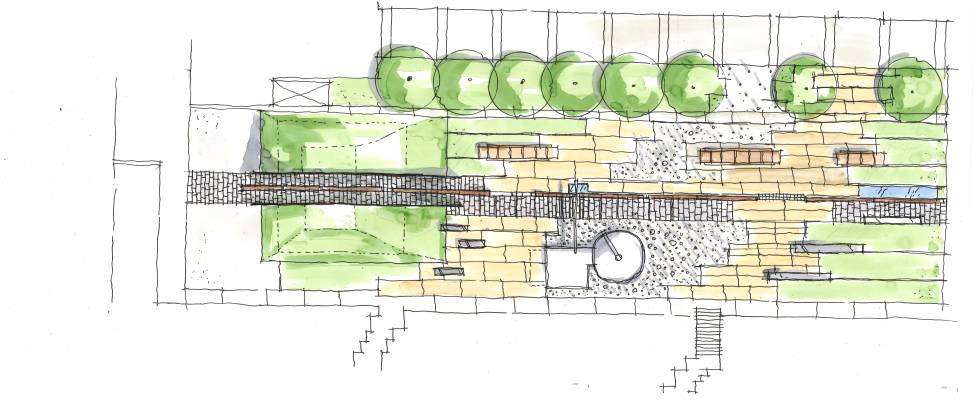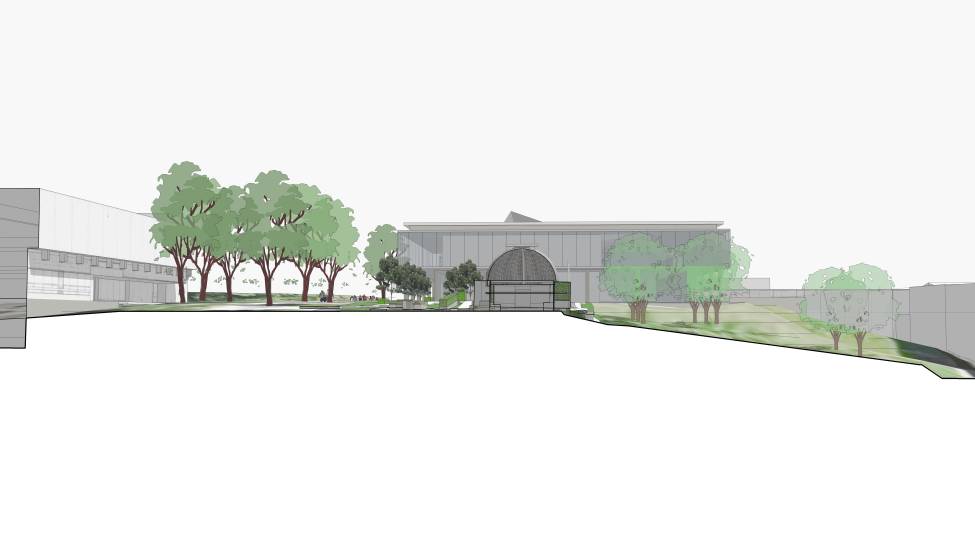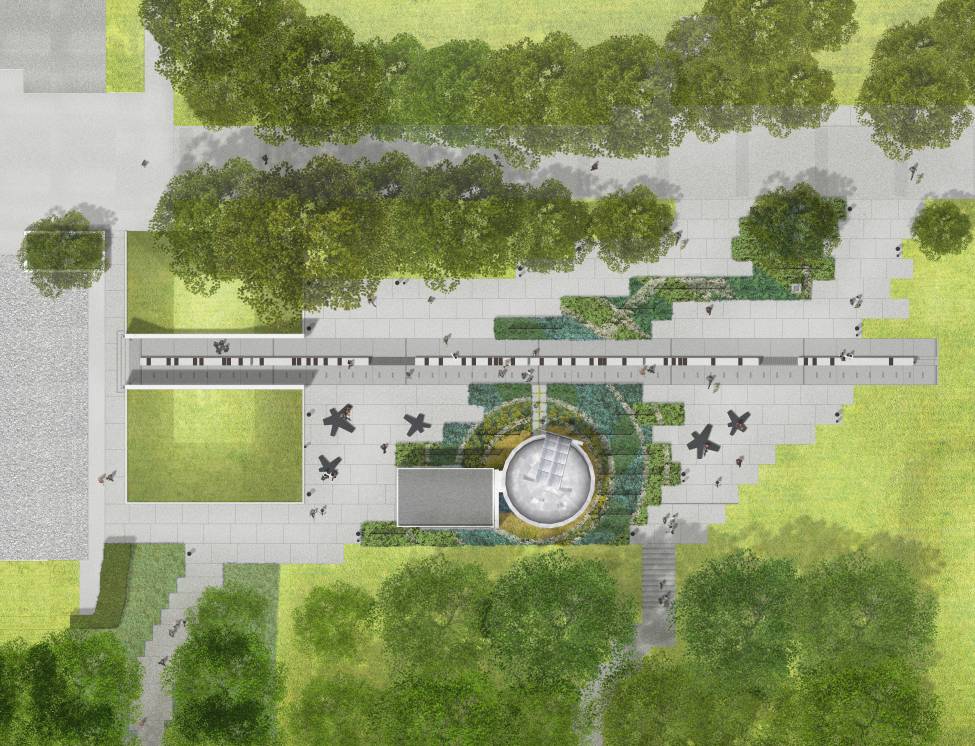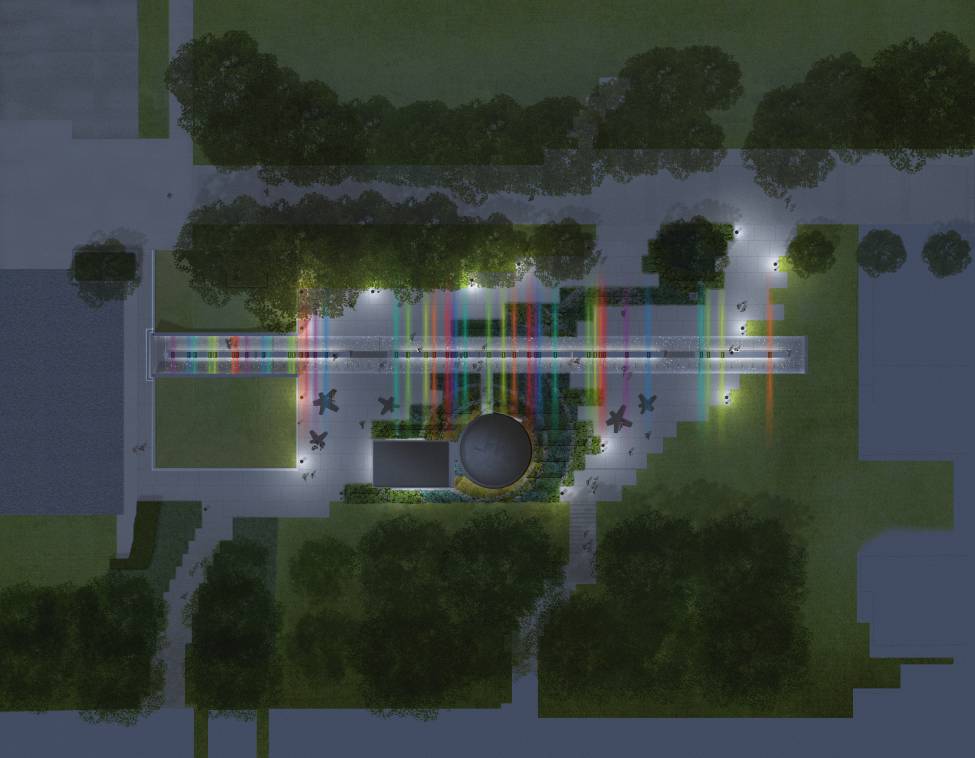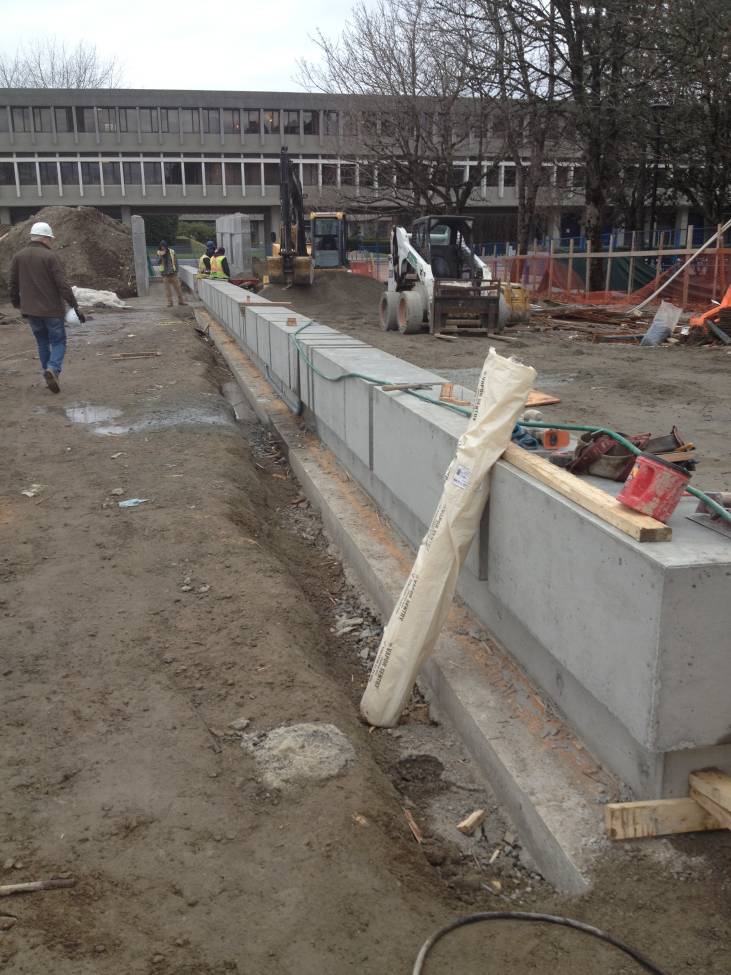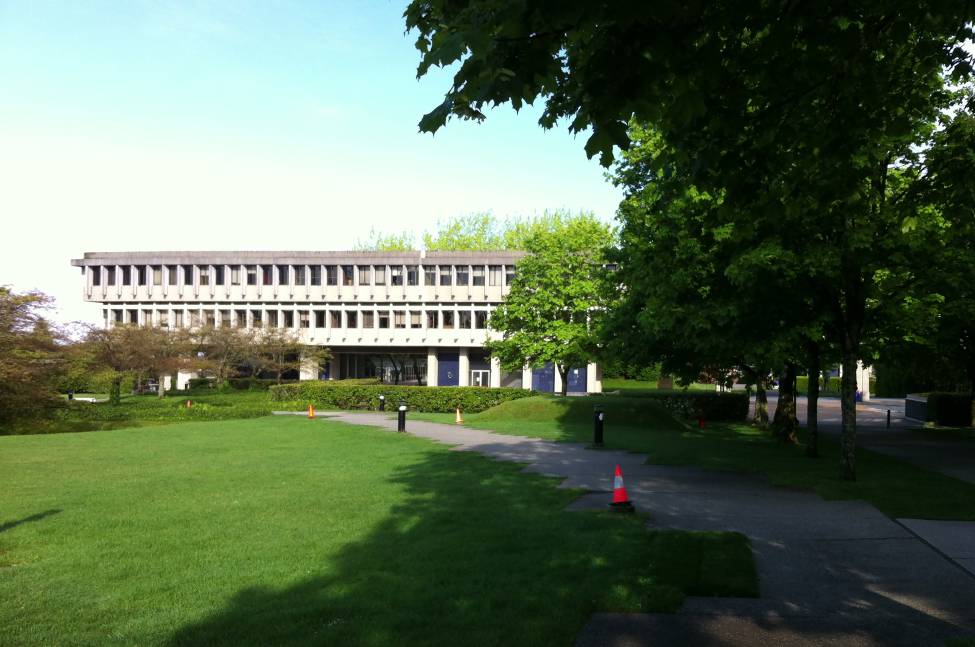Perched on top of Burnaby Mountain, Simon Fraser University is an iconic campus, marked by original architect Arthur Erickson’s terraced grid. Largely thanks to the vision of SFU physics professor Dr. Howard Trottier and funding from his brother, Montreal tech company founder Lorne Trottier, SFU set out to create a dedicated space for bringing science education and astronomy to children and the public.
As the prime consultants on this project, we were tasked with taking 0.4 acres of underused space on SFU’s campus and turning it into a site for meaningful scientific exploration—combining flexible greenspace and interactive learning space for all ages.
We based our design process on three principles. The first was ‘Ensure integration with the campus and Ericksonian vision’—that meant carefully following the campus’s orthogonal east-west geometry, featuring board-form concrete on the observatory building, and integrating steeply sloped grass berms, common to the campus.
The second principle—‘Model after scientific discovery and methodology’—was a fun way to subtly nod to the physics of the universe. Native plantings are arranged in a radial pattern that represents the orbit of planets around the sun. At night, the long seating plinth glows with coloured bands that reference elemental emission spectra. In the daytime this reference is visible through the black metal bands that include the periodic table icon of each element. Metal plates set into the paving offer a graphic representation of the powers of ten—the scales astronomers use to measure distance in the galaxy. Glowing stones in the pavement represent a “field of stars”. Black star-shaped seating suggests dark stars—a mystery in space. Screens around the Observatory are placed to symbolize a key component in quantum theory in which objects can appear solid yet are spaced apart.
Finally, the third principle was ‘Continued interest over time.’ To the end, it takes a full year to experience the evolving components of this project. Depending on the time of day or season, the landscape continually offers something new. By day, the space is used by the campus community as an outdoor retreat and learning centre. By night it hosts a thriving astronomy program.
Today courtyard visitors use both old and new methods to observe the night sky—they can set up their own telescopes in the plaza or go to deep space in the observatory. SFU’s Starry Nights program attracts people from all over Metro Vancouver to the plaza for evening star parties and astronomy workshops—fostering curiosity and discovery in ways that are exceeding everyone’s expectations.
Awards
2017
CSLA National Award of Excellence, Small-Scale Public Landscape
2016
Illuminating Engineering Society of North America: Illumination Awards
Partners
Kasian
Integral Group
Bush, Bohlman & Partners LLP
exp.
Westpro Infrastructure
Ian McLennan
Lorne & Howard Trottier
